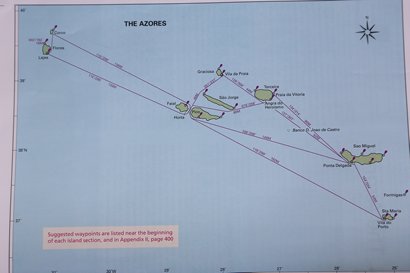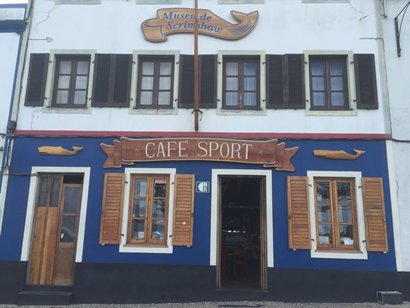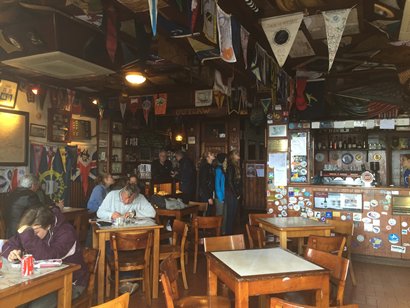38:31:865N 28:37:51W Horta Faial Azores

Shaya Moya
Don & Susan Smyth
Mon 20 Apr 2015 15:59
|
What a soul destroying crossing from Antigua to the
Azores. We motored for 7 days, over a thousand miles, of the 2226nm trip,
arriving in Horta, Faial, with about 150 litres of diesel left. Close call. This
was due to having to cross the belt of extensive calms that dominate this area,
coupled with a series of low systems that influenced the route, causing light
and variable winds. That is why there has not been a blog until we had been to
the Azores, as there was nothing to write about on the crossing.
We had mixed fortune when a large front caught us
up on Friday 10th April, just as Chris Tibbs had forcasted. . We went from
motoring at 5-6kts to sailing at 9-10kts under deeply reefed main and
Staysail. The wind swung into the South West and increased from 10-15kts to
30+knots with gusts of 40kts and even a couple of 50kts. The
swell increased to about 4-6m but fortunately this was from behind us so we
could surf down them. Coupled with rain and cold this was a bit miserable. Shaya
Moya took it in her stride as always and lifted her skirts and we flew along at
9-10kts for a good 24 hours into Horta.
  Finally we arrived in Horta on the island of Faial,
one of 9 islands that make up the Azores archipelago, lying 800nm west of
Portugal. They were discovered by the Portuguese in the early 15th century. From
their settlement in 1430, the Azores have played a crucial part in maritime
history. They beacame a port of call for ships travelling westwards to India and
the Americas, with great explorers such as Columbus, Vasco de Gama, Cabral and
in more recent times Slocum-the first man to circumnavigate the world alone. In
1855 the first transatlantic cable was laid via Horta and the island became the
base for several large cabling companies. American flying boats stopped here on
there way to Europe.
    They have been a favourite port of call for yachts
ever since Slocum first stopped in Faial, as demonstrated by the numerous
paintings of names of ships and yachts that are painted on the marina walls and
the old breakwater. Shaya Moya has a small spot on one of the piers. We
unfortunately had to berth up alongside an 80ft Swan on the outer breakwater and
had our starboard stern cleat ripped out of the toerail by the swell. First
serious damage in the entire trip. I have found a boatbuilder in Portimao,
Portugal, who is confidant he can repair it. Lets hope it all works
out.
   No visit to Horta would be complete without having
a drink or meal at the famous Cafe Sport, on the road overlooking the yacht
basin, which has been a meeting place for yachtsmen for over half a century.
There is a Scrimshaw museum here belonging to the owner of the cafe. Scrimshaw
is the art of carving designs on whalebone, a tradition of sailors from the old
whaling days. The small cafe has been in the same family's hands for three
generations, each patron being affectionately known as Peter. With good food and
great service, we could not help but have most of our meals there. We celebrated
Tom's birthday there with a great meal and some well earned drinks.
    We met a chef on a superyacht, Leslie, who was
holidaying in Faial, in Peters and she kindly took Ted on an island tour while
Tom and I did some shopping and work on Shaya Moya. They visited the old 19th
century whaling station and the Capelinhos, a volcanic eruprtion site on the
western tip of Faial. Unfortunately we were leaving the next day so we could not
join her on a visit to an adjoining island, Pico, a dormant volcanic island with
a 2351m peak, Pico Alto, dominating the island.
  We spent three days in Horta before sailing 135nm
overnight to Ponta Delgada, Sao Miguel on the eastern side of the
archipelago.
|